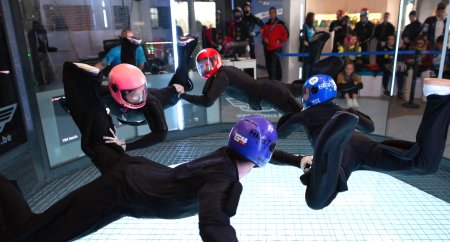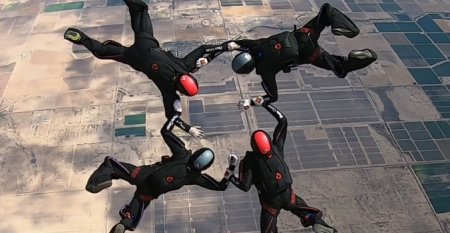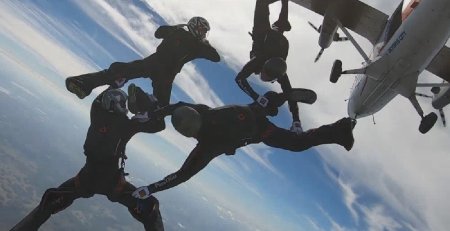
National
Skydiving
League
226 Pecan Street
Deland FL 32724
tel: (386) 801-0804
© 2003 - 2025
All Rights Reserved


226 Pecan Street
Deland FL 32724
tel: (386) 801-0804
© 2003 - 2025
All Rights Reserved


Both teams agreed, without even discussing it directly with each other, that enough outdoor training has become even more important since the ever rising number of wind tunnels have brought alternative training opportunities to teams almost everywhere on the planet.
There is no flying chamber yet that can simulate exits and the sub-terminal conditions during the first page of any sequence. There is also no doubt for the most experienced and highest skilled competitors that the success of the first ![]() page is the foundation for a good performance and a good score in a competition round.
page is the foundation for a good performance and a good score in a competition round.
The reason why the level of the meet averages at CISM events and indoor competitions are relatively close to each other is the missing challenge of different exit formations and that the 35 seconds of working time begin when the sub-terminal part of a competition round is almost totally over.

The value of improved individual skills as the foundation for a better team performance is out of question, and indoor training is also very beneficial for the technical development of block techniques and other specific 4-way skills.
There are only a few full-time teams who know that they need as much training of the first page as possible, more than anything else, including indoor training. HayaBusa members Dennis Praet and Jeroen Nollet explained that it is not only exit and sub-terminal page, missing in the flying chamber, that makes real outdoor training so important.
They said that there is another very important factor that makes indoor training so much easier compared to jumping from planes. Freefall does not offer any references after the exit and for the rest of the working time.

 when any references are gone once the jump plane is not in sight any longer. The view of the jump plane also does not offer much help for orientation anyway, as the visuals are changing each second of the sub-terminal phase.
when any references are gone once the jump plane is not in sight any longer. The view of the jump plane also does not offer much help for orientation anyway, as the visuals are changing each second of the sub-terminal phase.
It is even more difficult trying to use anything for a reference due to the changing angles of the horizon. The terminal speed finally brings at least a consistent horizon, even though clouds could become a very common distraction, as well.
None of these factors play a role in the flying chamber, where the frames, the operator's cabin and other landmarks never change and offer very helpful references for easier orientation, in training and in competition.
It is a challenging task for teams and competitors, who are not professionals, to find the best balance between indoor and outdoor training. Almost all of the world's top ![]() performers and full-time competitors are coaching recreational teams in their off-time, and they share the responsibility to find the perfect balance. It is surely a different formula that the recreational teams need to be most efficient, and each team is different. There are similarities and common experiences that the coaches share with the teams, while they have to find the best specific balance for each team. It's a tough job...
performers and full-time competitors are coaching recreational teams in their off-time, and they share the responsibility to find the perfect balance. It is surely a different formula that the recreational teams need to be most efficient, and each team is different. There are similarities and common experiences that the coaches share with the teams, while they have to find the best specific balance for each team. It's a tough job...